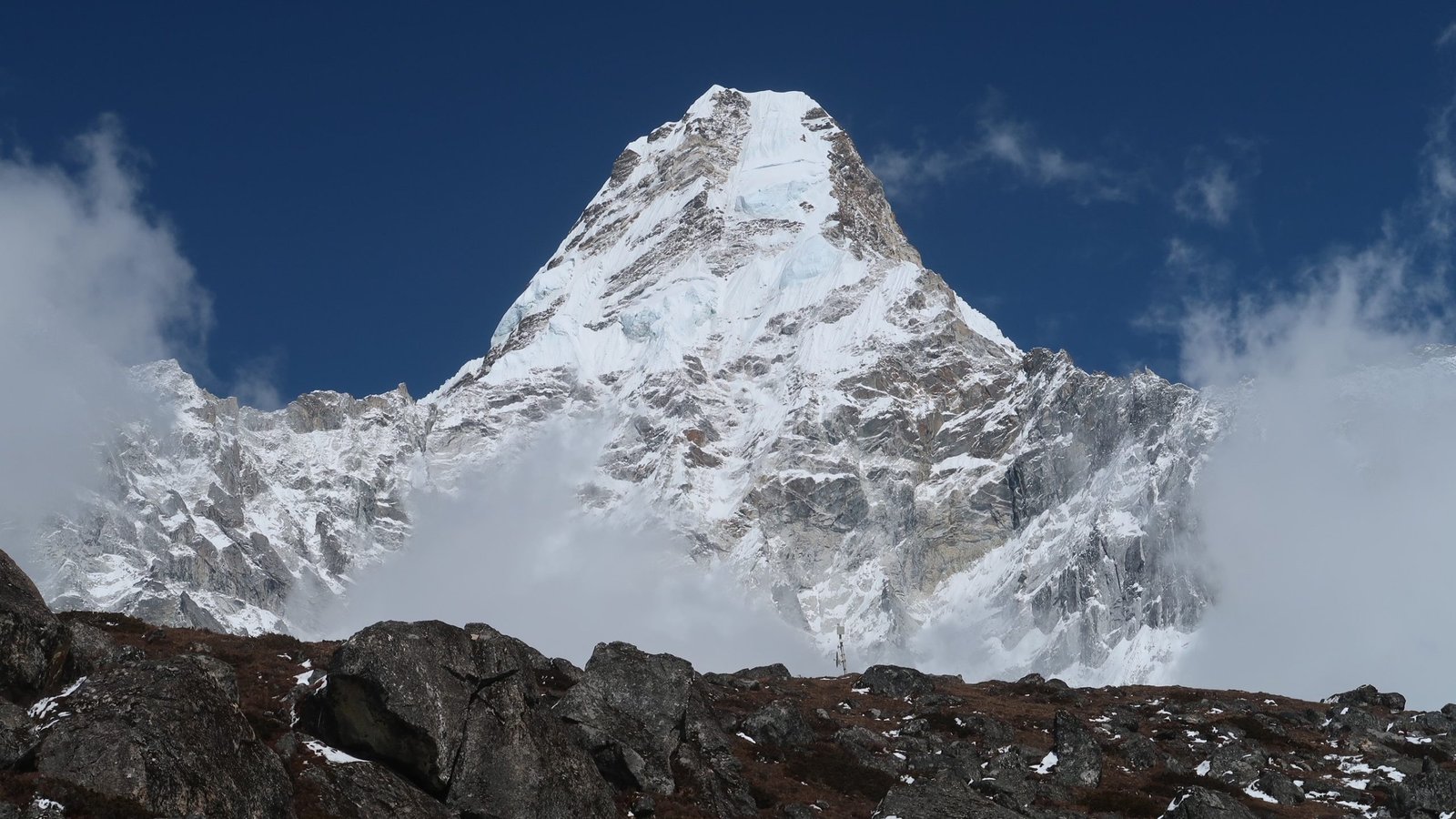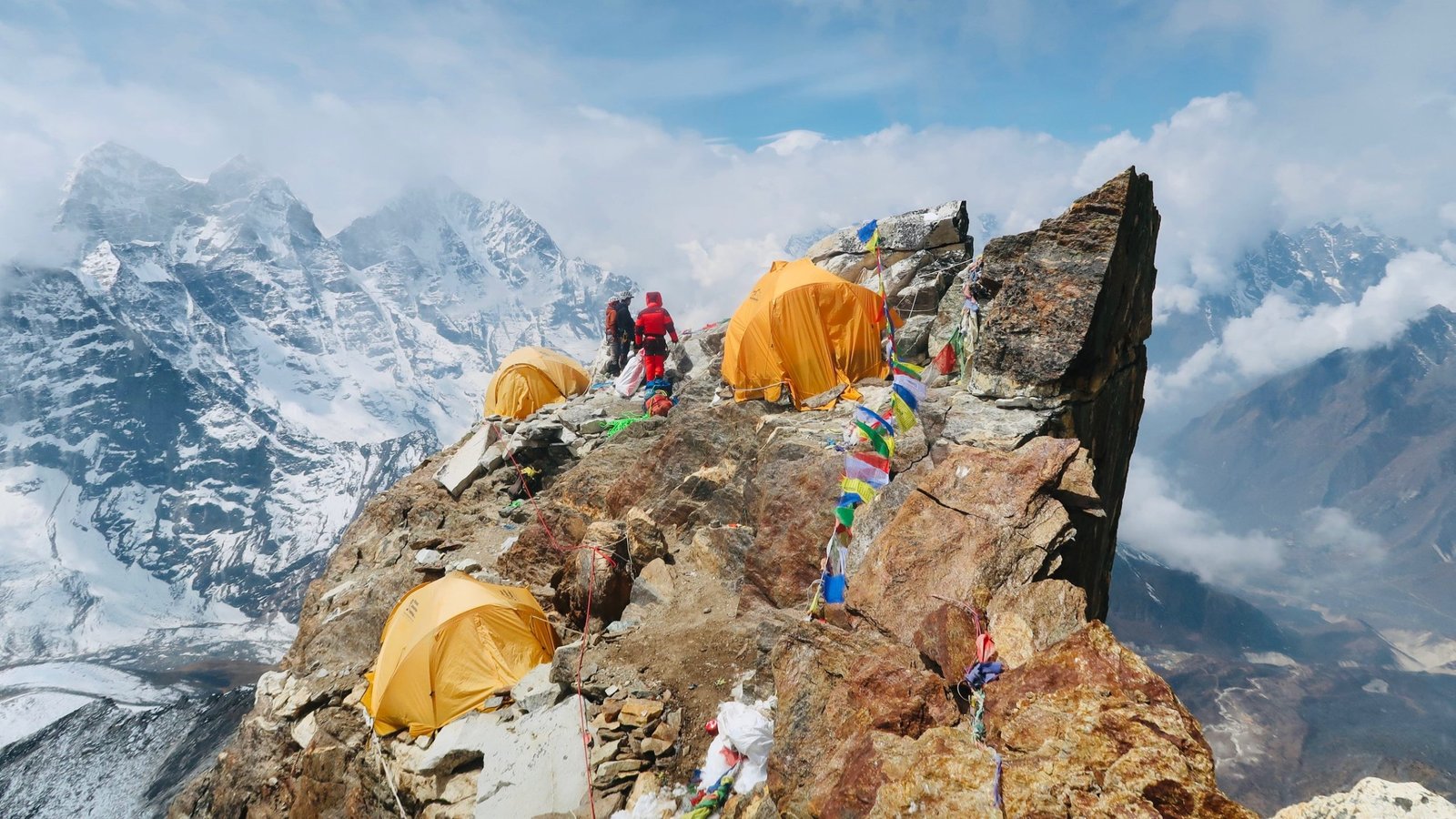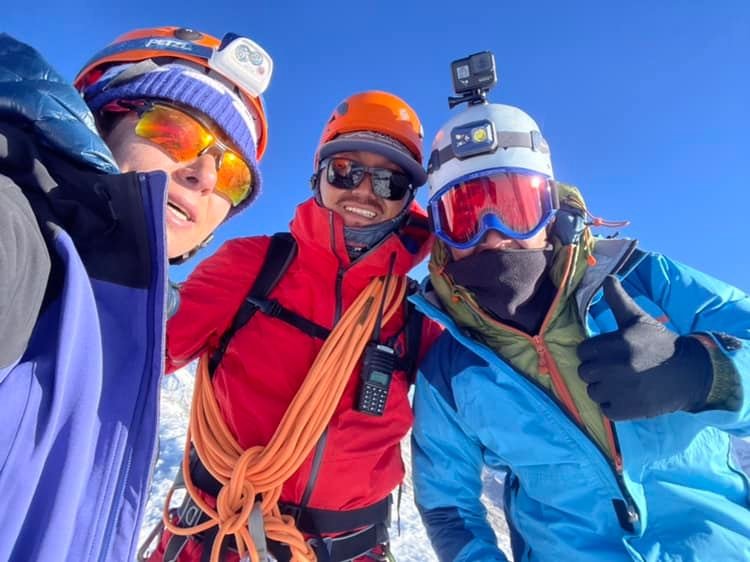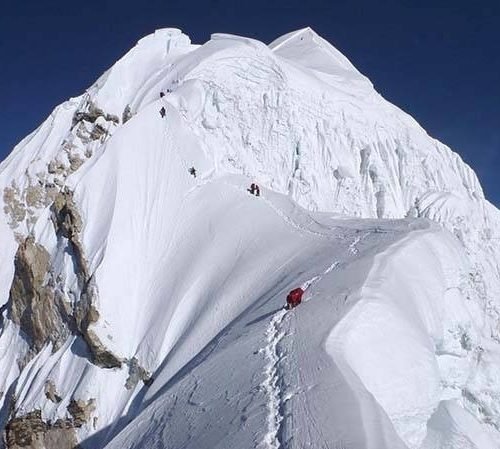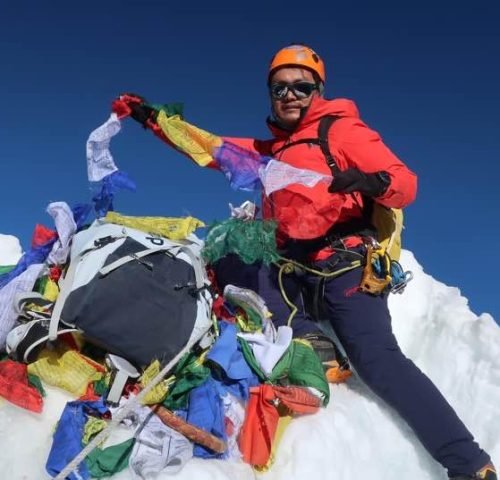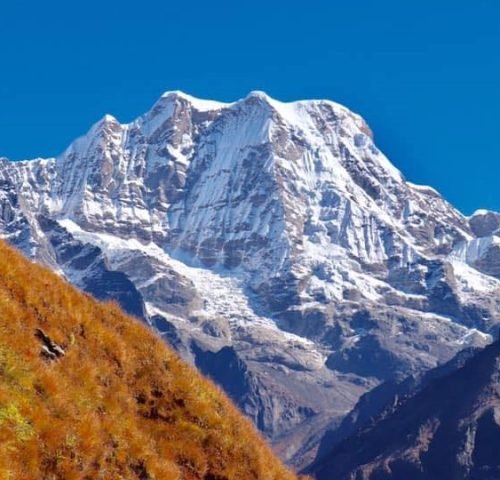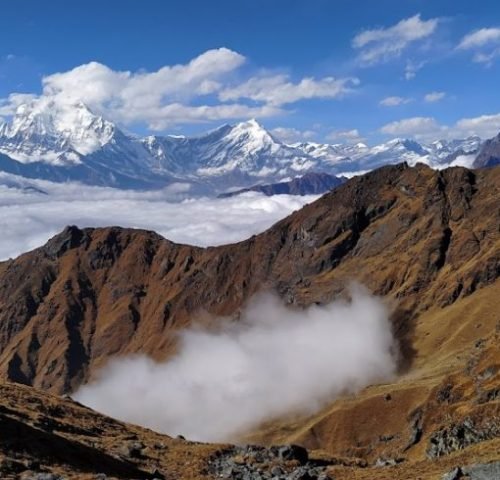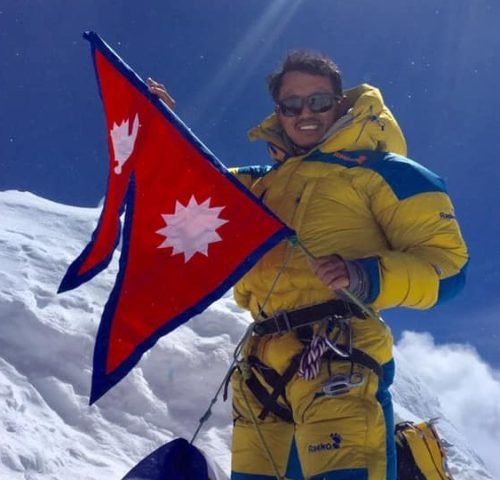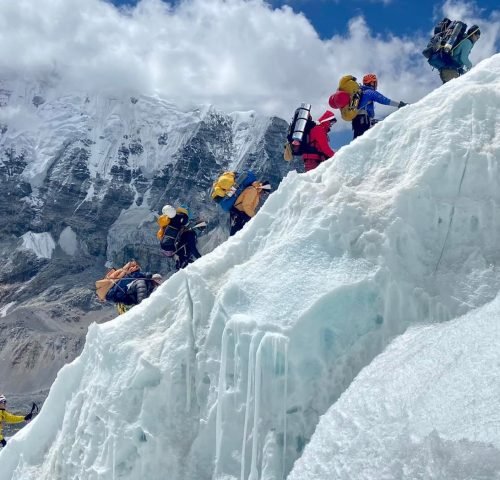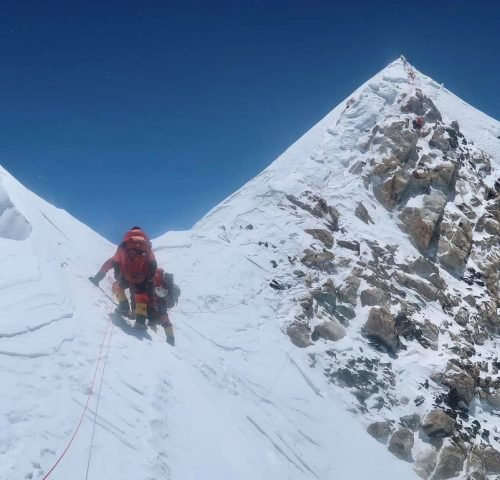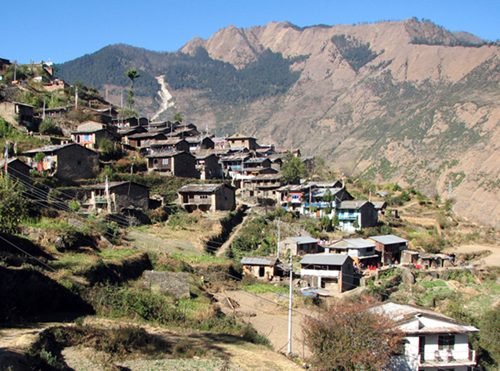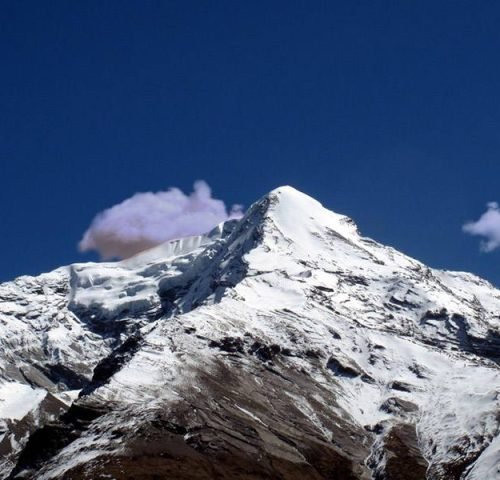Overview
Mt. Amadablam Expedition is a popular mountain located in the Khumbu region of Nepal. Standing at a height of 6,812 meters (22,349 feet), it is known for its stunning beauty and challenging climbing routes. Mt. Amadablam Expedition expedition offers a challenging and rewarding experience for experienced mountaineers. It combines breathtaking scenery, technical climbing, and the satisfaction of reaching the summit of one of the most iconic peaks in the Himalayas. Amadablam expedition typically takes around 30 days, including acclimatization and climbing days. The expedition starts with a trek from Lukla to Namche Bazaar, where climbers spend a few days acclimatizing to the high altitude. This helps the body adjust to the thin air and reduces the risk of altitude-related illnesses.
After acclimatization, climbers make their way to Mt. Amadablam Base Camp, which is located at an altitude of around 4,570 meters (15,000 feet). This serves as the starting point for the climbing expedition. There are several climbing routes to the summit of Amadablam, with the Southwest Ridge being the most popular. The ascent involves technical climbing, including rock, ice, and snow sections. Climbers need to be experienced in using ropes, crampons, and ice axes. Climbers establish multiple camps on the mountain to facilitate the ascent. Camp 1 is set up at around 5,700 meters (18,700 feet), Camp 2 at around 6,050 meters (19,850 feet), and Camp 3 at around 6,400 meters (21,000 feet). These camps serve as resting and acclimatization points.
The final summit push is the most challenging part of the expedition. It involves navigating steep slopes, exposed ridges, and technical sections. The summit offers breath-taking panoramic views of the surrounding Himalayan peaks. The best time for an Amadablam expedition is during the pre-monsoon season (March to May) and the post-monsoon season (September to November). These periods generally have more stable weather conditions, making it safer for climbing. Climbers need to have prior mountaineering experience and be in excellent physical condition. Basic mountaineering skills, including rope handling, ice climbing, and crevasse rescue, are essential. It is also recommended to have experience climbing at high altitudes.
Details Itinerary
Day 01: Arrival in Kathmandu (1,350 m)
Our office representatives will welcome you outside the terminal hall and transfer you to the hotel. Brief you about tomorrow’s activities and collect any documents required by our office.
Day 02: Introduction and expedition preparation in Kathmandu.
On the second day, we will complete all of our formalities, such as getting the required paperwork, permits, and other formalities required for our expedition, and we will begin making preparations for it. We will now prepare our luggage, go shopping, and double-check everything we need (especially medicines and essentials). There will be briefings on every part of the expedition, including all gear and equipment, the length of the trip, lodging options, base camp facilities, and all other aspects related to the expedition. It also gives you the chance to interact with and get to know your climbing companions and colleagues.
Day 03: Fly to Lukla and trek to Phakding (2,651 m/8697 ft): 3 to 4 hours of walking after a 40-minute flight.
We take an early morning flight to Lukla, where all Everest treks begin. You will need permission from the locals to continue exploring once you arrive in Lukla. This is the entrance to the protected Khumbu Region. To proceed, you will need the Khumbu Pasang Lhamu Entry Permit. The Trekkers Information Management System card has been replaced with this admission permission. The admission fee goes toward the development of the rural community.
Once you get into Lukla, eat breakfast at the lodge, and prepare luggage for the porters, the walking starts. To get to Phakding, there are a few ups and downs, as well as many prayer rocks (Mani in the local language). After you’ve settled into your Phakding lodge, take a short walk to the village.
Day 04: Trek to Namche (3,440 m/11,286 ft): 5 to 6 hours of walking
Our trail passes through a pine forest, and we continue our walk on the trail that goes north up the Benkar valley. We cross the Dudh Koshi River and pass Chumoa and Monjo villages before reaching the entrance of the Everest National Park. Then, after crossing a suspension bridge, we pass Jorsale village and walk alongside the Dudh Koshi and Bhote Koshi rivers. ascend on a steep trail and reach Namche Bazaar, which is probably the biggest town in the Everest region.
Day 05: Acclimatization day in Namche (3,700 m/12,139 ft): 4 to 5 hours of walking
We can tour Namche Bazaar, which is the primary town of the Everest or Khumbu region. We can hike up to the Everest viewpoint hotel and enjoy the sunrise over the Himalayas, including Mt. Everest, Mt. Lotse, Nuptse, Mt. Amadablam, Thamserku, Kongde, and so on. If we are interested in a day hike, we can trek to Khumjung village. Today we also visit the Hillary School and a monastery that houses a yeti’s scalp.
Day 06: Trek to Tengboche (3,956 m/12,979 ft): 5 to 6 hours of trekking.
The trek until Phunki is an easy walk. From here, we ascend towards Tengboche village, which houses the very famous Tengboche monastery, which is the biggest monastery in the Everest region. The monastery is blessed with panoramic views of the Himalayas, including Mt. Everest, Nuptse, Mt. Lotse, Mt. Amadablam, and Thamserku. If we reach there by 3 o’clock, we can observe a Buddhist religious ceremony.
Day 07: Trek to Mt. Amadablam Base Camp (4,480 m/14,370 ft): 6 to 7 hours trekking.
Following Tengboche monastery, we move on to Mt. Amadablam base camp, which is located in a lovely meadow that also serves as the yak pasture under the mountain’s west face. While ascending to Pangboche, we cross the Imja River on a suspension bridge while guiding the route through juniper woods and high-altitude tree lines. The trail is located in the calmer section of the Khumbu valley. We arrive at Mt. Amadablam base camp at 4450 meters, taking in the 360-degree vista of mountains like Kangtega (6783 m), Taboche (6542 m), Thamserku (6618 m),
Day 08-11: Base camp training and preparation
We spend several nights at base camp for proper acclimatization before we head to the higher camps. We will do one rotation climb up to Camp II before pushing for our summit of Mt. Amadablam. We will also practice walking with fixed ropes on tiny cliffs and get some quick instructions about climbing clothing and equipment.
Day 12: Climb to Camp One (5700 m): 4–5 hours of treks.
We hike along a moraine ridge with amazing views of the mountain and route. Eventually, we join the beginning of the Southwest Ridge, where it turns from a plateau to a knife-edge. The climb begins on a trail but soon enters a large talus field, and we climb over granite boulders. The final 200 meters are climbed using fixed lines up a steep rock slab, where camp one sits on rock platforms at the top of this slab.
Day 13: Climb to Camp 2 (5900 m): 2 to 3 hours of climbing.
Heading to Camp II from Camp I, staying overnight at Camp II, and returning to base camp the next day. Camp 2 is set up at around 5900 m. We start the technical climbing using fixed ropes. The Yellow Tower route to Camp 2, located at 5,900 meters, is the crux of the entire route.
Day 14-18: Back to base camp from Camp 2 (4460 m): 5 hours of walking
staying overnight at Camp II and returning to base camp. After a few days of rest in the base camp, our expedition guides will check the weather and choose the best time to undertake the final summit push.
Day 19: Climb to Camp One (5700 m): 4–5 hours of walking.
We hike along a moraine ridge with amazing views of the mountain and route. Eventually, we join the beginning of the Southwest Ridge, where it turns from a plateau to a knife-edge. The climb begins on a trail but soon enters a large talus field, and we climb over granite boulders. The final 200 meters are climbed using fixed lines up a steep rock slab, where camp one sits on rock platforms at the top of this slab.
Day 20: Climb to Camp 2 (5900 m): 2 to 3 hours of climbing.
Heading to Camp II from Camp I, Camp 2 is set up at around 5900 m. We start the technical climbing using fixed ropes. The Yellow Tower route to Camp 2, located at 5,900 meters, is the crux of the entire route.
Day 21: Climb to the Summit (6812 m/22349 ft) and back to Camp two: 7 hours of climbing.
We get up early, eat breakfast, and then climb mostly ice and mixed routes above camp 2, including the difficult Grey Tower. We cross Mushroom Ridge, a series of cornices and ice sculptures, just before reaching Camp 3. Summit day is technically easier than anything we have climbed up until high camp. The route involves snow and ice up to 50 degrees, climbed using the safety of the fixed ropes in place. Amazing views of Everest, Nuptse, Baruntse, and Pumori, as well as Mt. Lotse Shar, Mt. Makalu, and Cho Oyu can be seen from the summit. Return the same day to camp two after summiting, staying overnight at camp II.
Day 22: Trek to Base Camp (4,570 m/14,989 ft): 3:30 hours of walking
We will descend back to Base Camp, and, in keeping with our duty as responsible trekkers, we will clean up all the waste around the camp.
Day 23: Trek to Namche Bazar (3,440 m/11,284 ft): 7-8 hours of walking
We trek down and again pass through Pangboche village, using the same trail we used on the way up. The trail leads down to a river. After crossing the river, we walk for an hour up through the forest and reach Tengboche. Afterward, we continue our journey to Namche.
Day 24: Trek to Lukla (2,860 m/9383 ft): 6–7 hours of walking.
We begin our trek to Lukla today on rocky terrain. It is mostly a downhill trek on a trail alongside the Dudh Koshi River. We cross several suspension bridges and pass by several monasteries and villages before reaching Lukla.
Day 25: Fly to Kathmandu (1350 m/4429 ft): 35 minutes of flight.
We catch an early morning flight to Kathmandu after our long mountain journey. After reaching Kathmandu, we can take a rest or do some souvenir shopping. If we want to explore any other areas of Kathmandu, our guides can help with both souvenir shopping and sightseeing.
Day 26: Final departure:
Generally, you need 2 hours before your flight time to get to the Kathmandu airport in Nepal. So you transfer to the Kathmandu airport for your flight to your destination.
Cost Details
WHAT'S INCLUDED
• 4 Nights Hotel accommodations in Kathmandu at 3-star Hotel on Bed & Breakfast plan (before & after expedition).
• All land transportation arrival and departure transfer services to and from Airport both Domestic and International with other necessary surface transport as per itinerary.
• Domestic Cargo (40 kg included during domestic flight)
• (Kathmandu - Lukla - Kathmandu flight ticket) Kathmandu - Amadablamt Base Camp - Kathmandu for expedition members, Liaison officer & Expedition staffs.
• Transport of food supply & expedition equipment to Base Camp & back.
• Expedition Permit fee of Mt. Amadablam
• Sagarmatha National Park Entry Permit, Local Grassland Permit Fees
• Full board in lodges during trekking to base camp and back.
• All kitchen tent, store tent, dining tents, toilet tent, table, chairs & cooking utensils for BC.
• Fresh Food (we serve hygienic foods) and fuel at Base Camp.
• Base Camp single sleeping tent & Mattress for each member.
• High Tents above Base Camp. C1, C2. C3. High altitude food and fuel above Base Camp.
• Satellite Phone available at Base Camp, but nominal charge for use.
• There will be one personal professional climbing guide while climbing. one Sherpa climber for one person
• Service of Government Liaison Officer.
• Service of cook and kitchen boy at Base Camp.
• Insurance, Equipment allowance, daily wages of cook, kitchen boys & Liaison officer.
• 2 Expedition duffel bag for each member.
• Generator or Solar panel at Base Camp for light and charging.
• Agency service charge and Tax.
WHAT'S NOT INCLUDED
• International airfare from/to your country.
• Nepal entry visa fee (can be obtained at the airport at upon arrival).
• Lunch and dinner during your stay in Kathmandu.
• Hotel accommodation after 4 night's stay in Kathmandu.
• Personal climbing gear and equipment above Base Camp.
• Personal insurance such as travel, accident, medical, emergency evacuation & lost luggage.
• Permit fees & customs charges, etc. for SAT phone, communication equipment & commercial filming.
• Expenses of personal nature such as drinks, laundry, postage, telephone etc.
• Tips and summit bonuses ($1000 is expected if summited)
